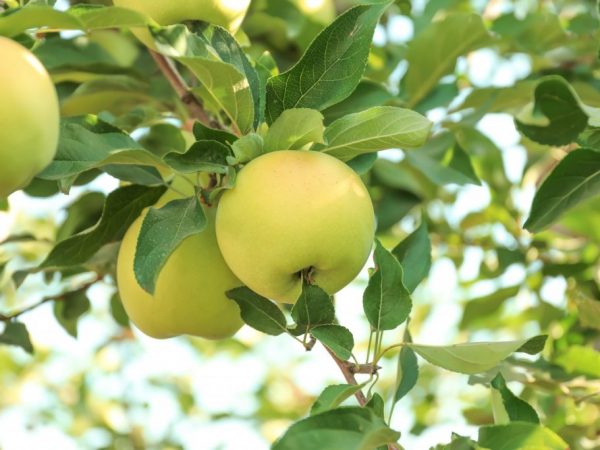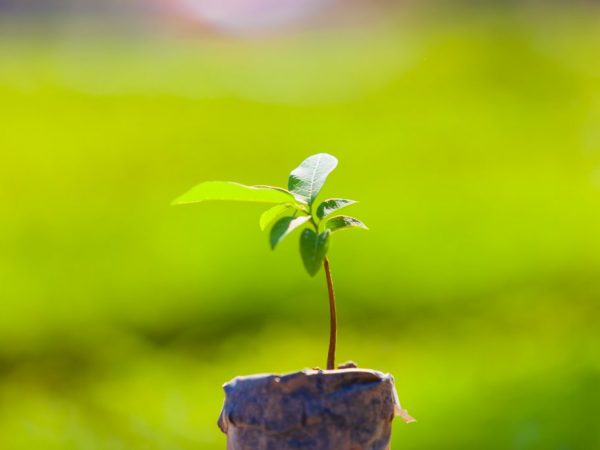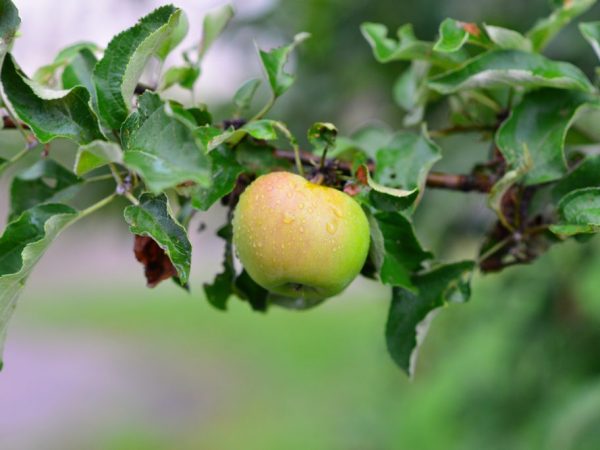Apple variety Altai Phoenix
Apple-tree Phoenix Altai is famous for its delicious fruits and undemanding care. The versatility of the hybrid allows you to grow it in any territory. The harvest is stored for several months.

Apple variety Altai Phoenix
Variety characteristic
The Altai Phoenix apple tree is a winter variety with a stable annual yield. The indicators of winter hardiness and disease resistance are average, but they are completely leveled by proper care and preventive measures.
Self-infertile type - pollination occurs with the help of flowers of other horticultural crops. Cross-pollination improves the characteristics of the variety;
Phoenix owes its qualities to the Bellefleur variety. The bred hybrid was distributed throughout the Altai Territory, and today it is one of the most popular crops in Russia.
Advantages and disadvantages
The variety has advantages:
- for one tree, no more than 5 m in a row are taken away;
- the shelf life of the crop is 5-6 months, while the apples do not lose their marketable appearance.
There are few disadvantages of the variety:
- The tree can withstand slight frosts, but if the winter period is protracted, especially in the northern regions, it will not be possible to cultivate the variety. In such conditions, the seedling will not grow into a full-fledged tree.
- A crop's good immune system does not protect it from scab.
Description of fruits
Phoenix apples are yellowish, with a reddish blush. Medium size (weight 135 g). In unfavorable conditions, the average weight of the fruit is 70 g. The skin is smooth and firm. The ribbing is medium, appears during the period of full ripening of the fruit. The skin color is yellow; closer to the time of ripening, a characteristic blush appears.
The fruits are delicious. The pulp contains at least 16% sugar, and also contains ascorbic acid and pectin substances - they are useful for the body.
Tasting score - 5 points. The characteristic "sourness" can appear if the apples lie in a cool place for at least a month.
Description of the tree
In low mountains, trees grow up to 8 m. The height of the culture in the steppe regions does not exceed 5-6 m.
The crown is round, lush. The foliage is densely located on the branches. The branches are located close to each other. The growth is stable - up to 8 cm per year. Active growth starts from the first year.
The foliage is dark green. The leaves are round with smooth edges. The surface of the plate is smooth without pubescence.
Landing features
Sapling selection

Only healthy seedlings are suitable for planting.
You need to purchase a two-year-old seedling. Annuals are unstable, they may not germinate or die after the first frost. Seedlings older than two years are not bought, because it is harder for such material to germinate in new conditions.
Before buying a seedling, they inspect - any spots or irregularities indicate a disease. If it has leaves or has a short root system, it does not fit. The roots are checked for strength.
Site preparation
Normal soil will do - not too sandy, not too clayey. A lowland or an area where groundwater is too high is not suitable. The shade, if formed by a shelter or structure near the garden, can affect the quality of the fruit.
A hole is prepared in the fall if planting is carried out in May, or 2-3 weeks before planting in the spring. Depth not less than 80-90 cm, diameter 1 m.
Organic fertilizer is placed on the bottom of the pit 2 weeks before planting. A week later, they dig it up.
Fertile soil needs to be fertilized only with nitrogenous substances. The worse the soil composition, the thicker the top dressing layer. For these purposes, slurry is prepared, half diluted with water, or bird droppings. Compost is also good for fertilizing.
Landing dates
It can be planted in spring and autumn.
- Spring: in the last week of March until the end of April. An important condition is a well-warmed soil and the absence of night frosts.
- Autumn: from late September to mid-October. During this period, it is also important to consider the possibility of the first frost.
Mulching is carried out immediately after planting - this is additional protection for the crop.
General care
Pruning
So that the yield of a young crop does not decrease, pruning is carried out from the first year. Crooked branches that disrupt the growth of neighboring shoots are subject to removal.
The term for pruning in the spring falls in March-April. There are no buds on the trees yet, so the cut off shoots have time to recover faster.
Sanitary pruning is carried out in autumn. It does not remove crooked branches, but only diseased and damaged shoots.
Watering
For seedlings 1-2 years old, the volume of water is 5-7 liters. A tree from 3 years old will need at least 10 liters.

The apple tree is watered three times per season
You need to water three times:
- in spring - during the period of abundant sap flow, from the beginning to the end of March.
- in summer - in the hottest months, more often in July.
- in the fall - two weeks before leaf fall.
Top dressing
As a top dressing, the gardener prepares compost, a mixture with peat and mineral fertilizers. During the flowering period, mineral fertilizing is preferable, and during active growth it is better to add humus.
Ripening and fruiting
The first fruits can be harvested in the 4th year. To increase the number of fruits on young branches, the first inflorescences are cut off.
Harvesting and storage
Harvesting is planned for the end of September. Apples can hang from the tree until the end of October. The shelf life of the crop is 4-5 months.
Growing in different regions
The Phoenix apple variety comes from Altai. Bred for temperate climates. For this reason, fruitful trees can be grown in the Moscow region, in Siberia and even in the Urals.
Care regulates all the disadvantages of the region: if it is cold in winter, it is better to insulate the tree and mulch.
In summer, if it is hot and dry, the amount of irrigation is increased.
Gardeners reviews
Gardeners appreciate this Altai Phoenix variety for the taste of apples and long-term storage of the crop. The tree thrives in almost all regions. The only disadvantage of this species is its vulnerability to scab.

